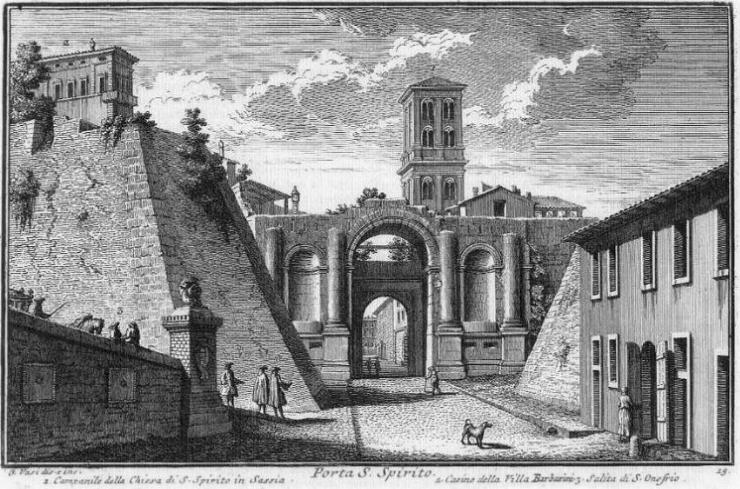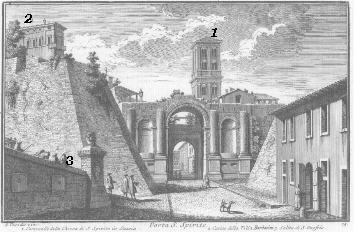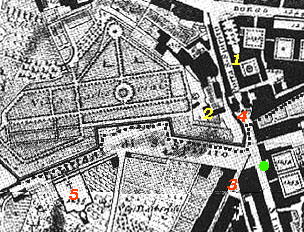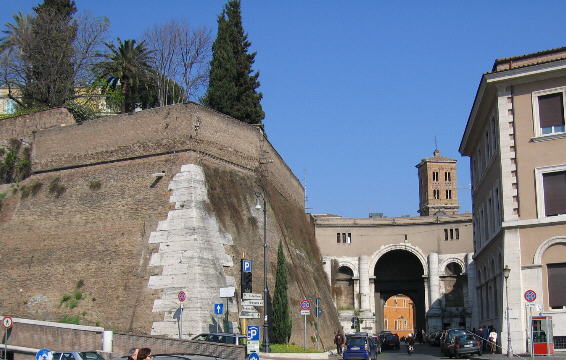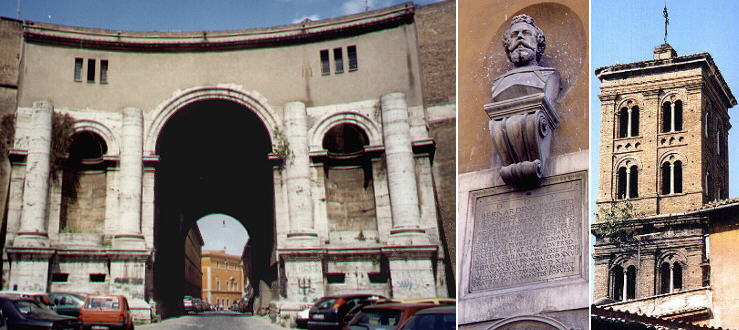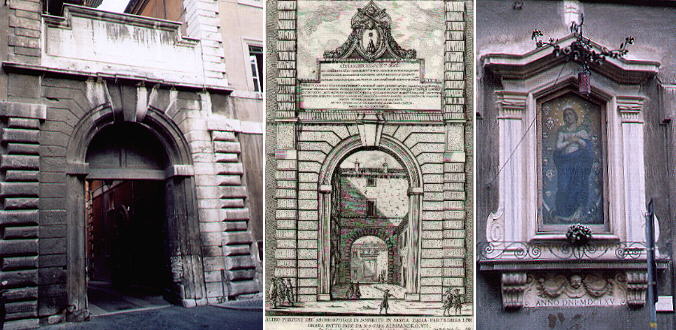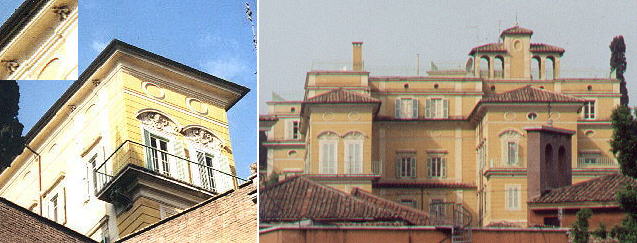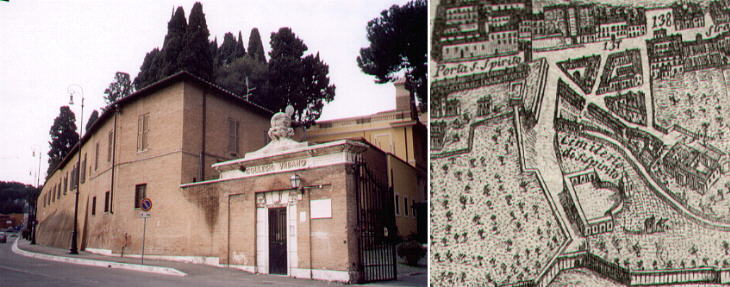  Porta S. Spirito (Book 1) (Map C2) (Day 6) (View D3) (Rione Trastevere) In this page:
After the 1527 Sack of Rome by the mercenary troops of the emperor Charles V, pope Paulus III (1534-50) decided
to strengthen the ancient walls of Rome (Mura Aureliane) and those of the Vatican (Mura Leonine).
Antonio da Sangallo Junior was charged with this task (see also Bastione del Sangallo).
On the site of the old Gate of the Saxons in the walls of Leo IV, Sangallo designed a new gate protected by a high rampart.
Sangallo died before
completing the gate.
The gate is still a way to access Borgo. The walls on the left are unchanged, whilst the small houses on the right have been replaced by an addition to S. Spirito hospital.
The design of the gate is simple but it conveys a sense of power in some ways increased by the empty niches. The upper part of the gate was added in the XXth century thus limiting the view of the very fine bell tower of S. Spirito in Sassia. In the street leading to the church there is a little bust dedicated to Bernardino Passeri, a goldsmith who died in 1527 fighting against the Imperial troops (the Lanzichenecchi), who eventually sacked Rome. The decision of Paulus III to strengthen with a new gate the access to the Vatican was a direct consequence of the events of 1527. Towards Ospedale di S. Spirito
The Hospital of S. Spirito in Sassia was enlarged by several popes whose initiatives are celebrated by inscriptions and coats of arms. Alexander VII is celebrated by a very lengthy inscription above one of the lateral entrances to the hospital. The etching by Giovanni Battista Falda shows the site a few years after the gate was built. Next to the gate there is a 1655 madonnella: under the glass there are some silver hearts, ex-voto offered in pursuance of a vow.
Up the gate and beyond the walls one can see a small part of the Casino of Villa Barberini. It is decorated with bees, the Barberini heraldic symbol. Today it is part of the new Collegio di Propaganda Fide built on the hill of S. Onofrio. The whole Casino can be seen (at a distance) from Ponte degli Angeli. The Casino was built by Giovan Battista Contini in 1667-71.
In 1744 pope Benedictus XIV in order to provide a proper burial ground for those
who died in Ospedale di Santo Spirito commissioned to the architect Ferdinando Fuga
the design of a cemetery near S. Onofrio. The cemetery was closed in 1891 and later on its
area was used for the erection of a complex of modern buildings (Collegio Urbano) hosting the offices of Collegio di Propaganda Fine, the institution
founded by Urbanus VIII to coordinate missionary activities. Today only the shape of the external
walls and the cypresses hint at the former use of the area. The 1781 Map of Rome by Giuseppe Vasi
provides a sketch of the cemetery design.
Next plate in Book 1: Porta Cavalleggeri Next step in Day 6 itinerary: Convento di S. Onofrio
Go
to |
All images © 1999 - 2003 by Roberto Piperno. Write to romapip@quipo.it
